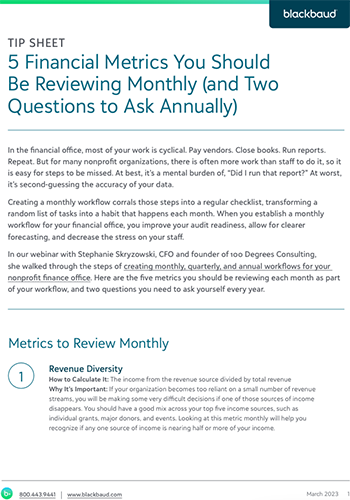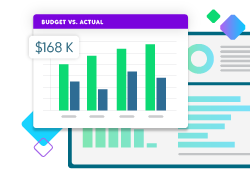Very few people enjoy being on the organization side of a nonprofit financial audit. Those people probably enjoy visiting the dentist and find reasons to go to the DMV as well.
Audits don’t have to be painful, especially remote audits. By proactively working with your auditor, having consistent workflows that keep your data updated, and establishing clear expectations with your staff, you can make remote audits just another project on your list, instead of something to dread.
By taking these steps early in your audit process, you can make your remote audit seamless and almost painless.
1. Build a Relationship with Your Auditor
When you are doing a remote audit, your choice of an auditor is no longer limited by geography. It’s important to find an auditor who is engaged in the process, and that you enjoy working with. Having an auditor whose calls you aren’t tempted to send to voicemail will make the entire process more enjoyable.
Meeting with your auditor on a bi-monthly or quarterly basis will help you build a rapport with them, plus it can help you better prepare for the actual audit. These check-ins are a great place to share updates happening with your organization—such as new grants or an unusual donation—and for them to share changes they are watching in legislation and regulations that might affect you.
Especially with remote audits, you want an auditor who is willing to work within your systems and controls. They will use the view-only access you provide to your fund accounting system, and it’s even better if they are already familiar with your system and know where to find specific reports. The kick-off meeting is a great time to do a virtual tour of your software. Even if you’ve been working with the same auditor, it’s been a year since they were in your system and there is a good chance something has changed.
2. Have a Plan to Review Your Policies and Documentation
It’s easy for your documentation to get outdated throughout the year, so reviewing important documents prior to your audit can save you time and headache.
Many organizations leave your internal controls documentation on autopilot until there is an issue. Use your audit prep as an excuse to dust off your documentation to make sure it accounts for any new updates you’ve made to your processes in the past 12 months. For example, your fund accounting software may have released new functionality to help with expense management, enabling you streamline your approvals.
You’ll also want to do a quick review of your operating reserve policy to make sure the amounts and repayment schedule still make sense for your organization. Your auditors will want to see your organizational chart, which is sometimes difficult to keep current. This is a good time to make sure you have the most recent copy, or to request an updated version from your HR team.
Your auditor might also be interested in your workflow document. This should include the checklist of reports and tasks you do monthly and quarterly to keep accounts up to date, information shared appropriately, and books closed on time each month.
 Free Resource
Free Resource
5 Financial Metrics You Should be Reviewing Monthly
Make these reports part of a monthly workflow with our free tip sheet

3. Set Clear Expectations
With remote audits, or any major project, much of the headache comes from people not understanding what is expected of them, or when it is expected. When it’s time for the audit, your team should already know what their role is and the timelines for completing their tasks.
Whether it’s your team’s first nonprofit remote audit or their fifteenth, have a quick review prior to the kick-off meeting with your auditor. Include everyone who will be a part of the audit, including leadership, HR, and the Board chair of your finance committee. Outline each person’s responsibility, even if it’s just to review a final report, and the deadlines for each task.
Also communicate expectations, such as prioritization of these tasks over other duties. Get buy-in from your leadership if needed. Document these expectations with the responsibility breakdown and timelines so everyone can refer to it if they have questions.
4. View Your Audit as a Way to Improve
One way to take the stress out of your nonprofit remote audit is to reframe how you think about audits. Instead of viewing it as a third-party coming in to highlight the slightest infractions, use your audit as a way to get better.
Part of this is partnering with an auditor who truly cares about your success. Working together, you can find better ways to do inefficient processes and identify any weaknesses. Plus, when you are done, it’s like spring cleaning for your books. Everything is updated and where it belongs.
Make Compliance Easy with Fund Accounting Software
Nonprofits tend to be understaffed, and when teams need to get work done quickly, they are likely to take shortcuts. It’s important to have fund accounting software that makes compliance and internal controls easy, which in turn makes your audit smoother. Attaching documentation for any changes or updates you make throughout the year also creates strong audit trails, and you are not at the mercy of someone’s memory for why an adjustment was made. Fund accounting software designed for nonprofits limits the number of workarounds you have to do—and your auditors have to try to follow.
If you are ready to simplify your compliance and make your audit less stressful, check out our webinar, Audit Readiness: How to Ace Preparation for Your Financial Statement Audit.
Fund Accounting Software that Drives Impact
Find out how Blackbaud’s Financial Edge NXT® fits your organization.

The post 4 Ways to Take the Stress Out of Your Nonprofit Remote Audit first appeared on The ENGAGE Blog.


0 Commentaires